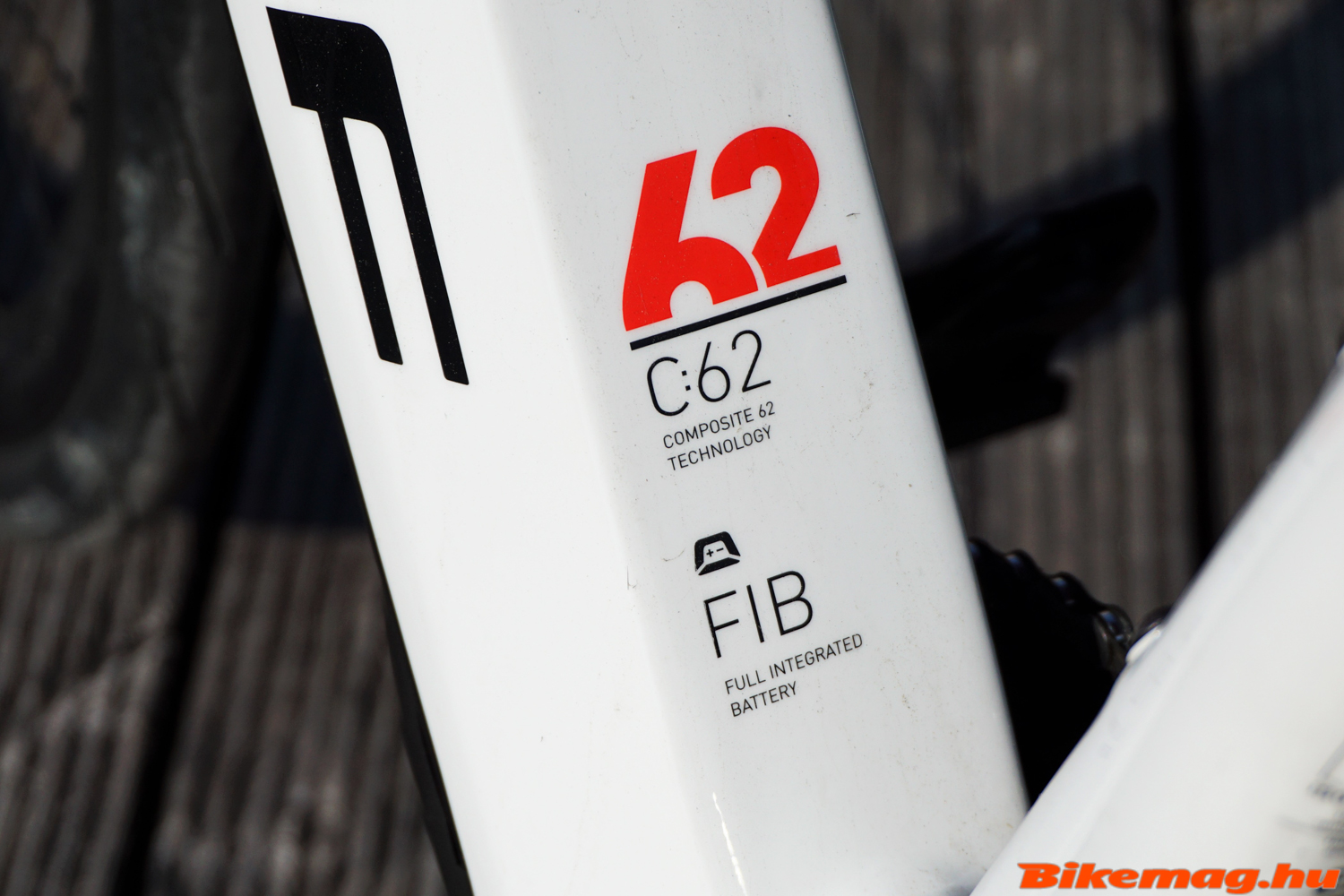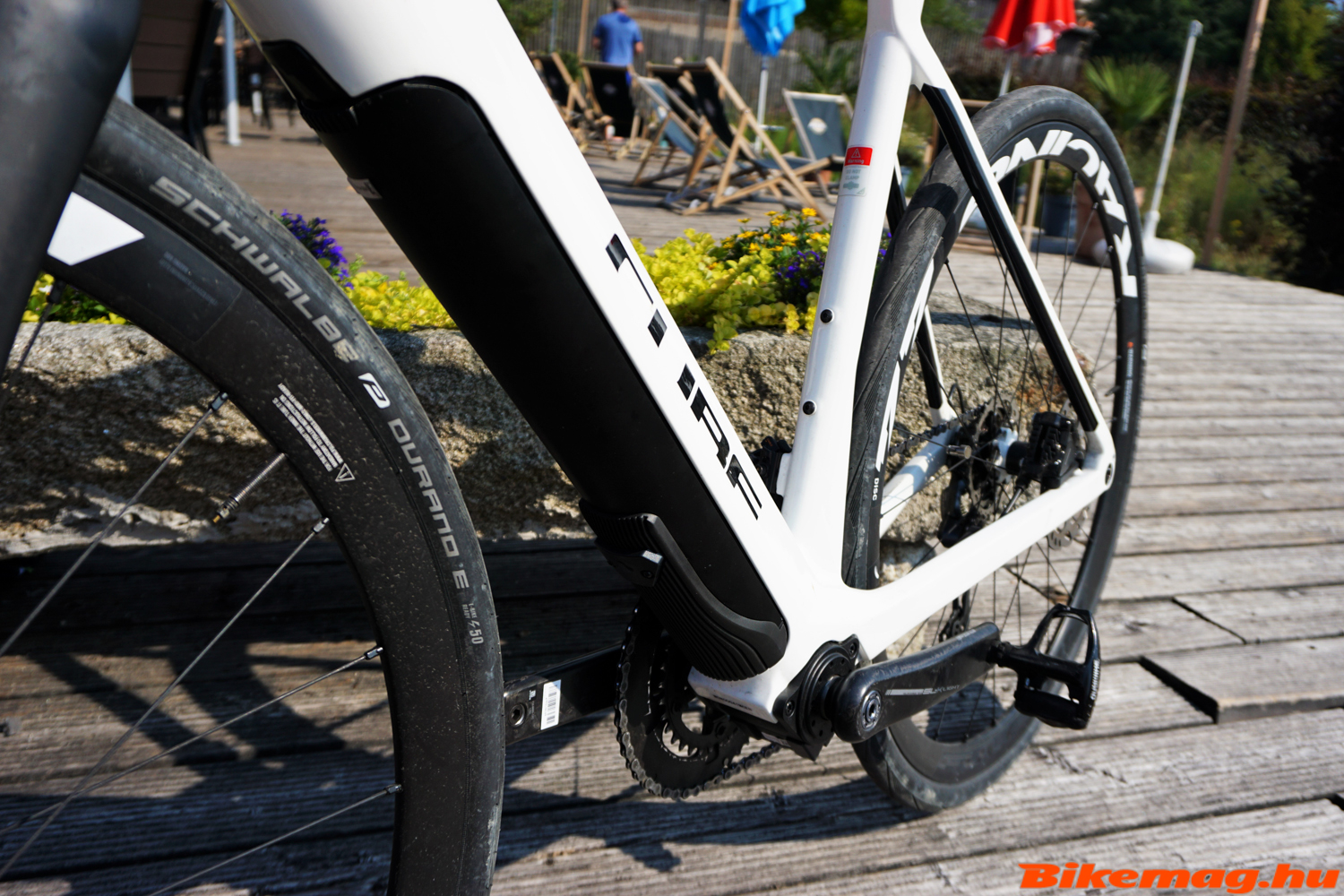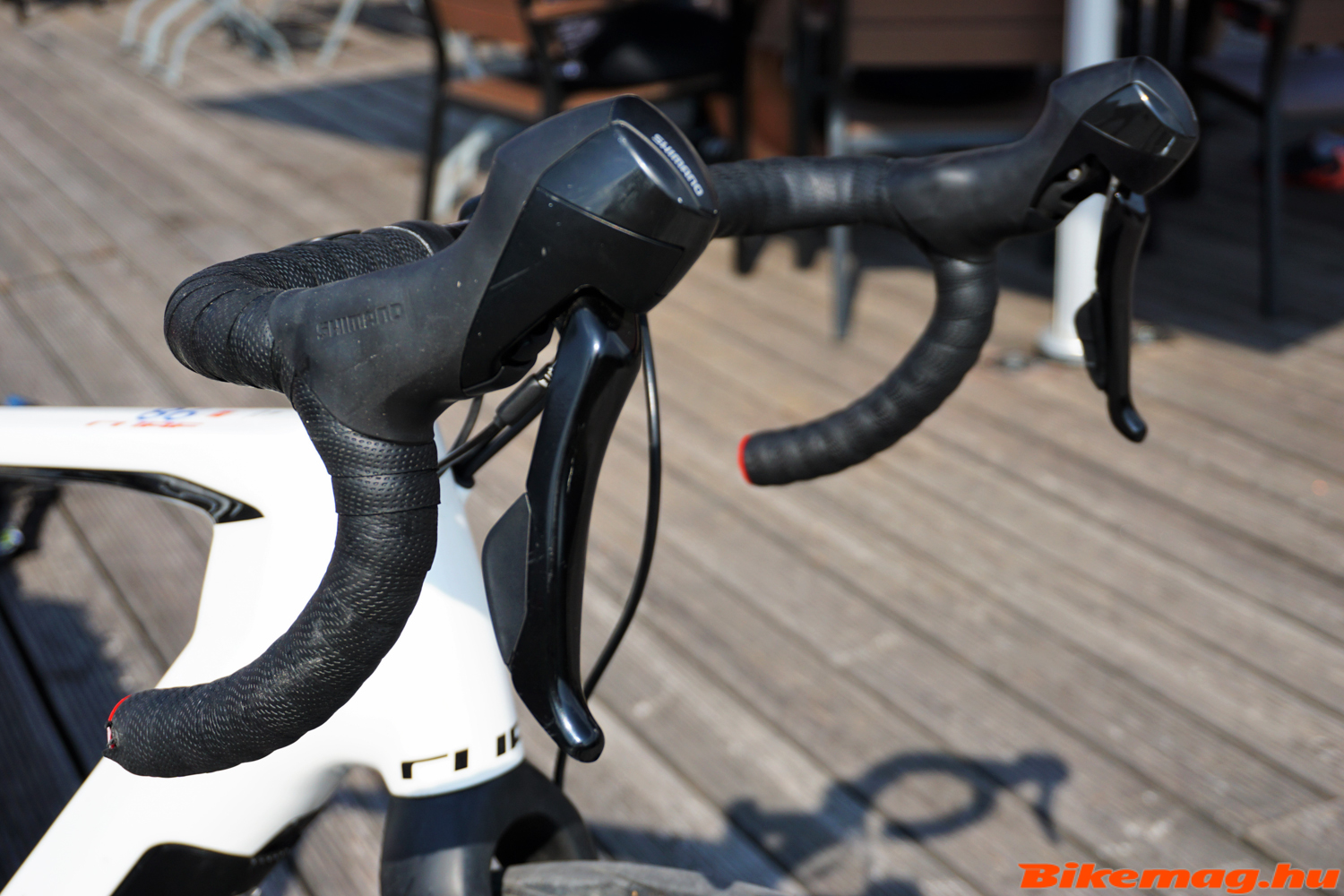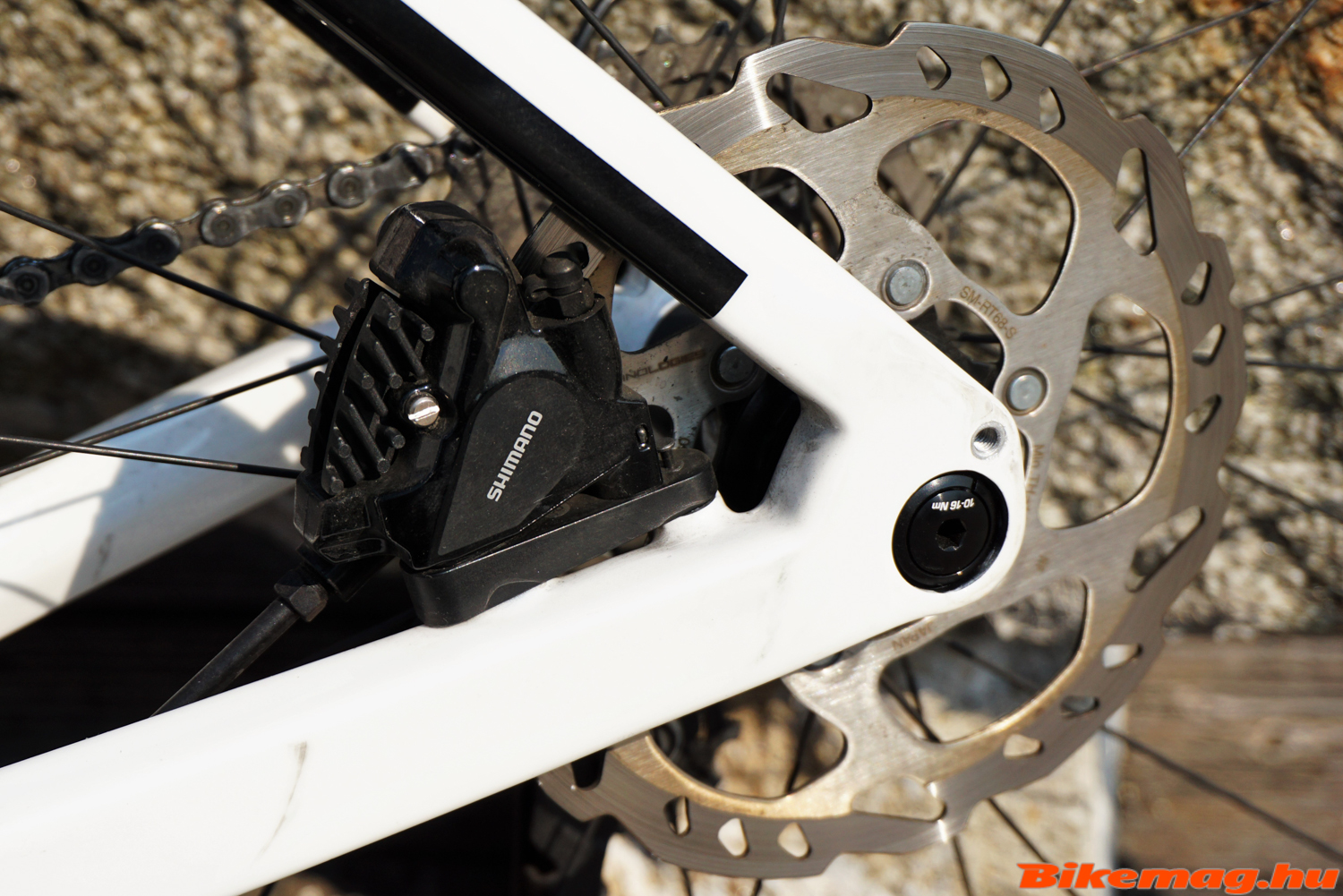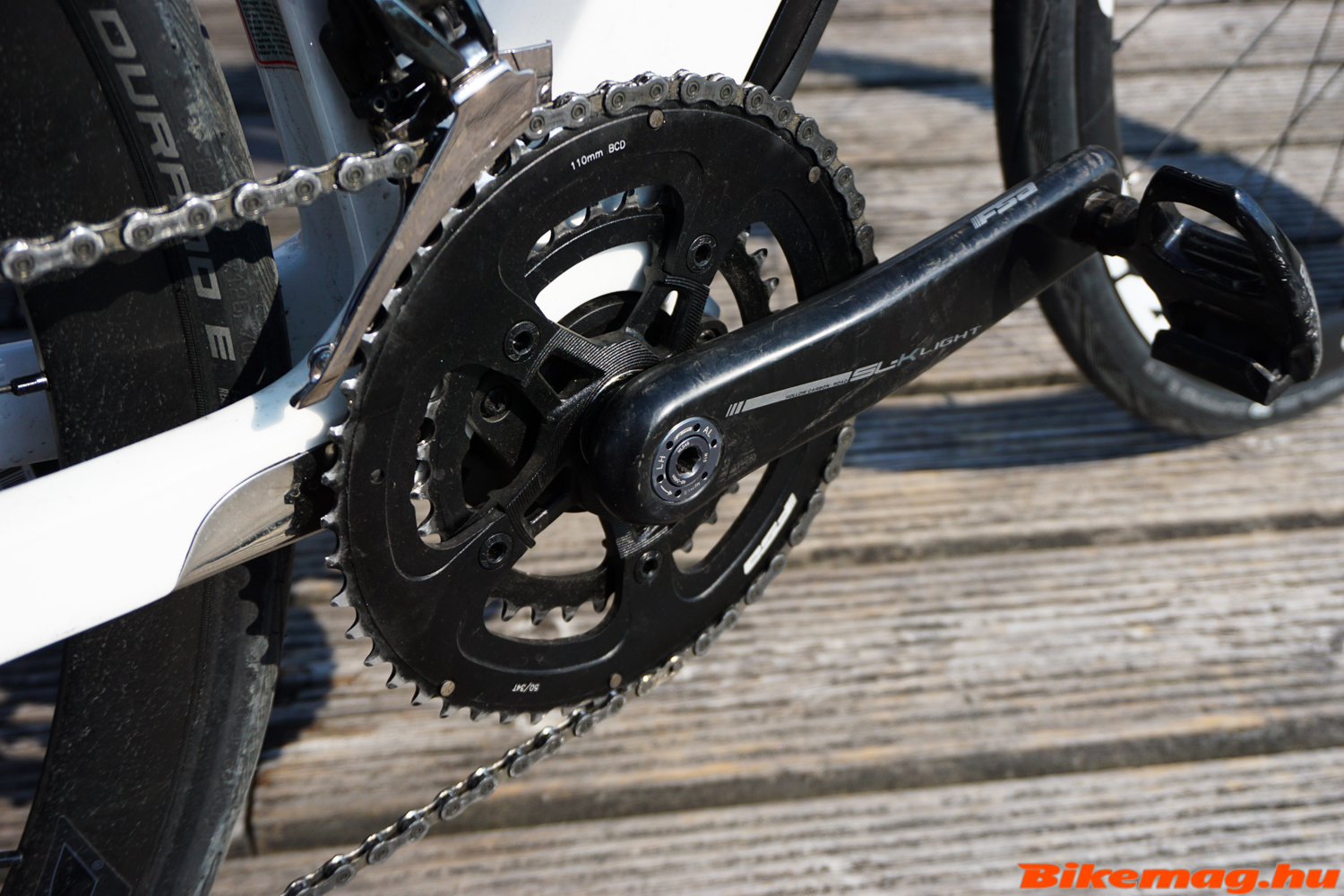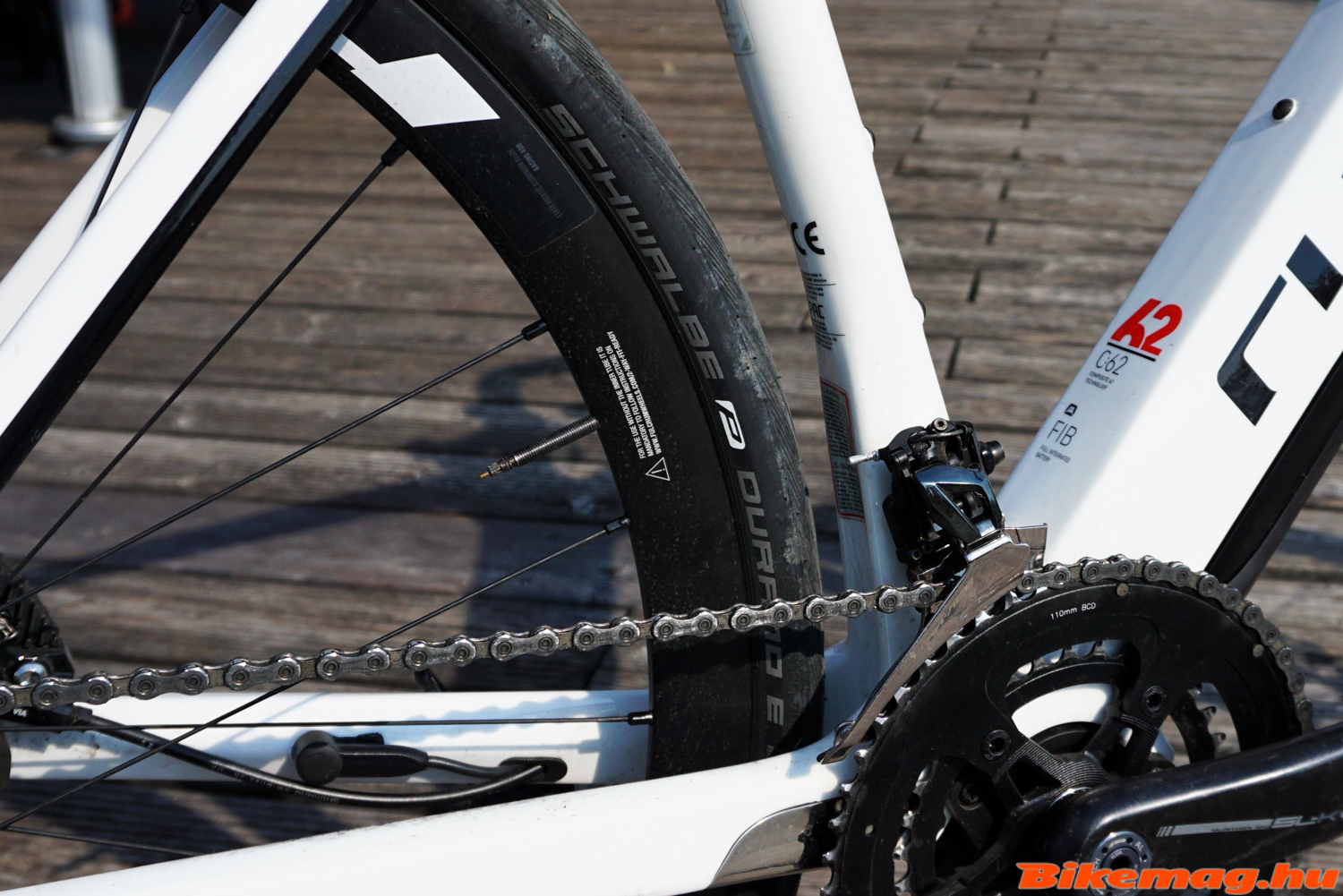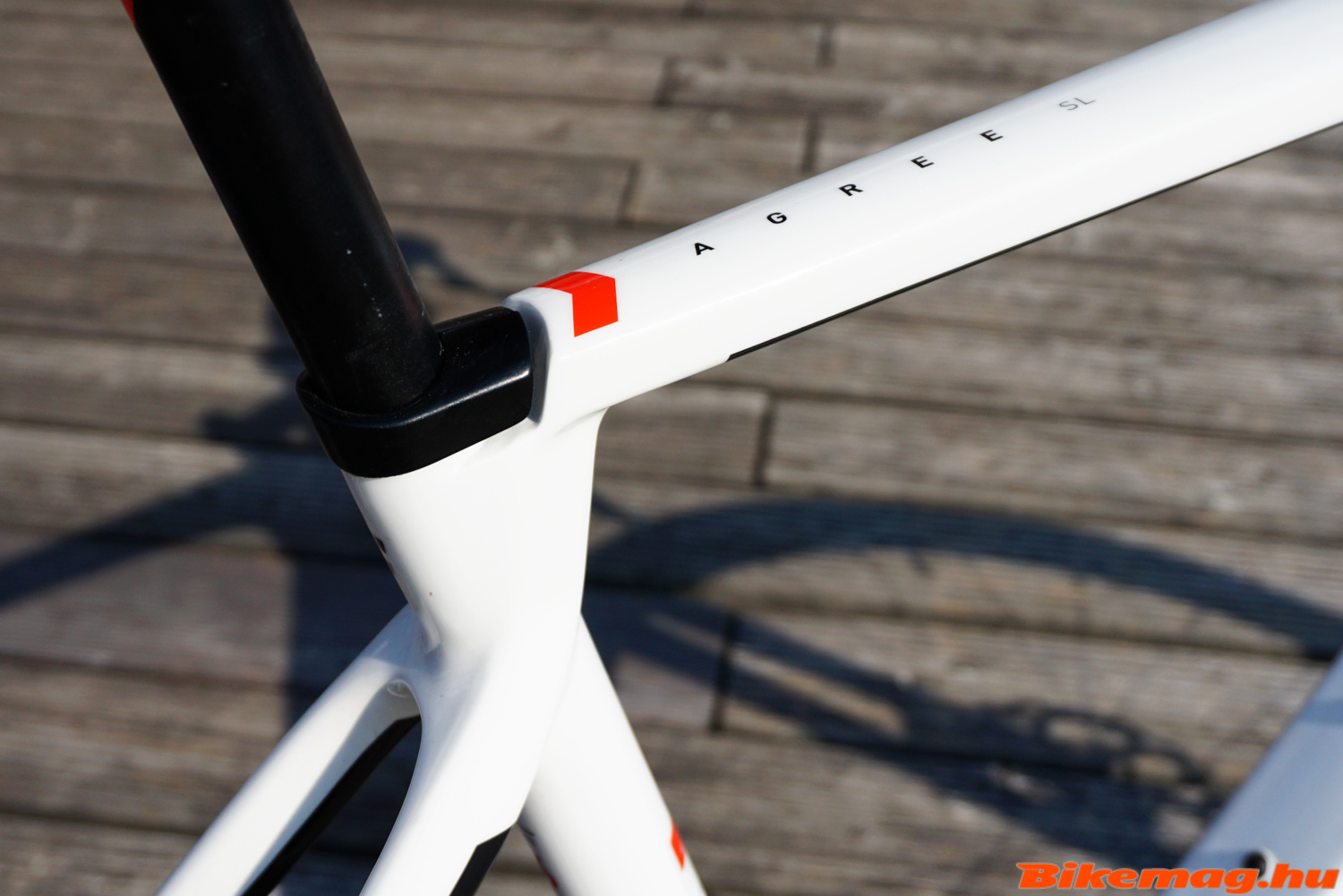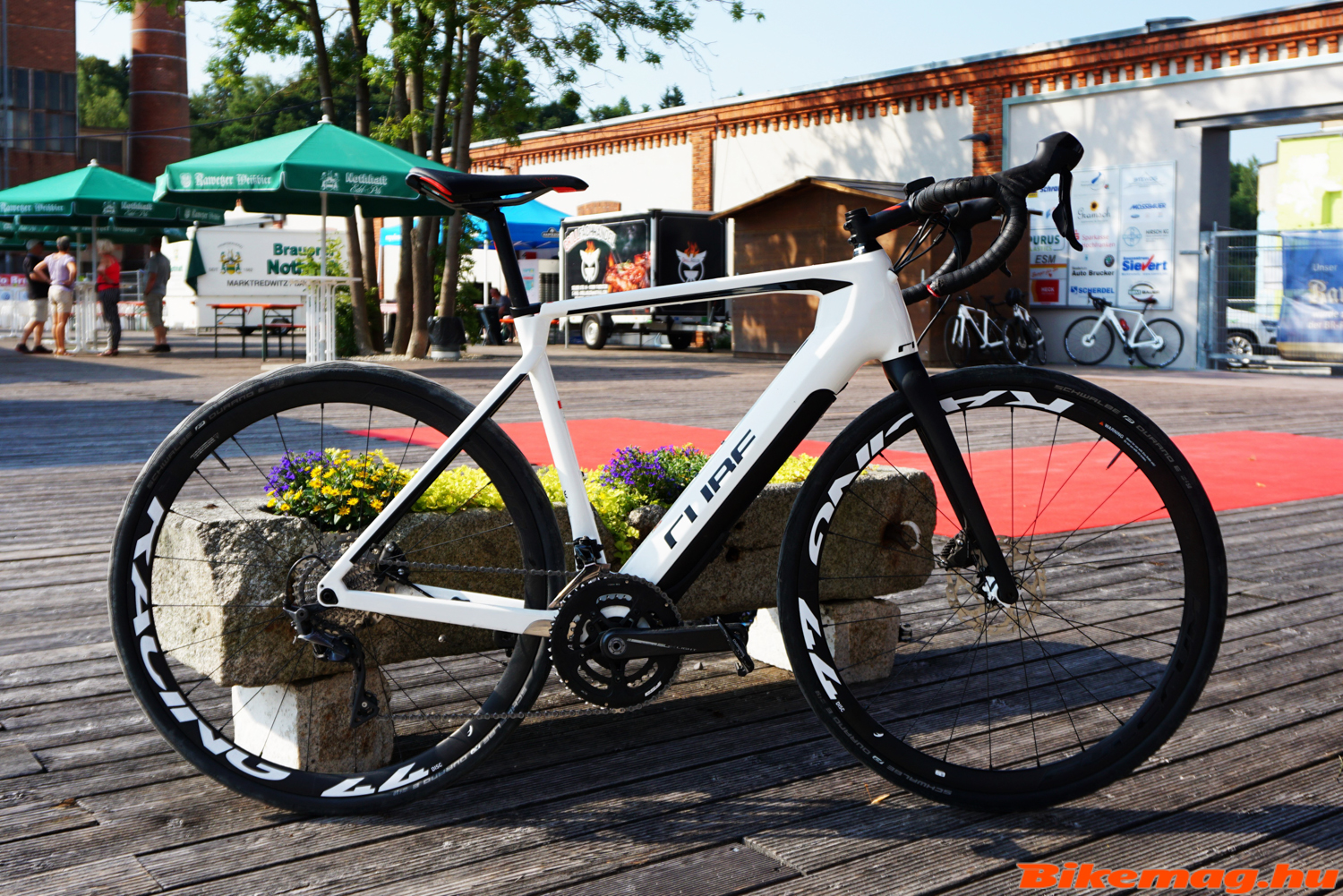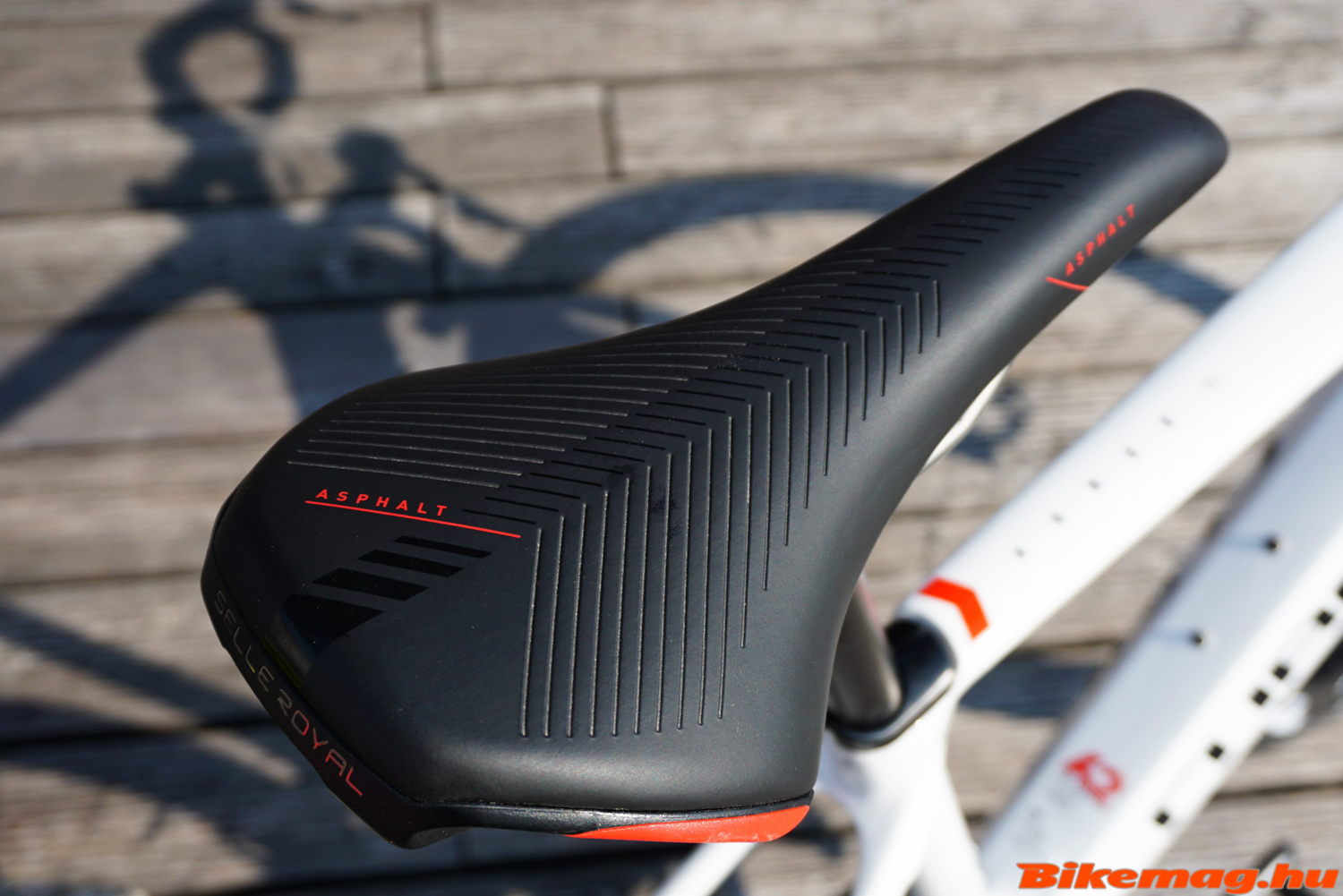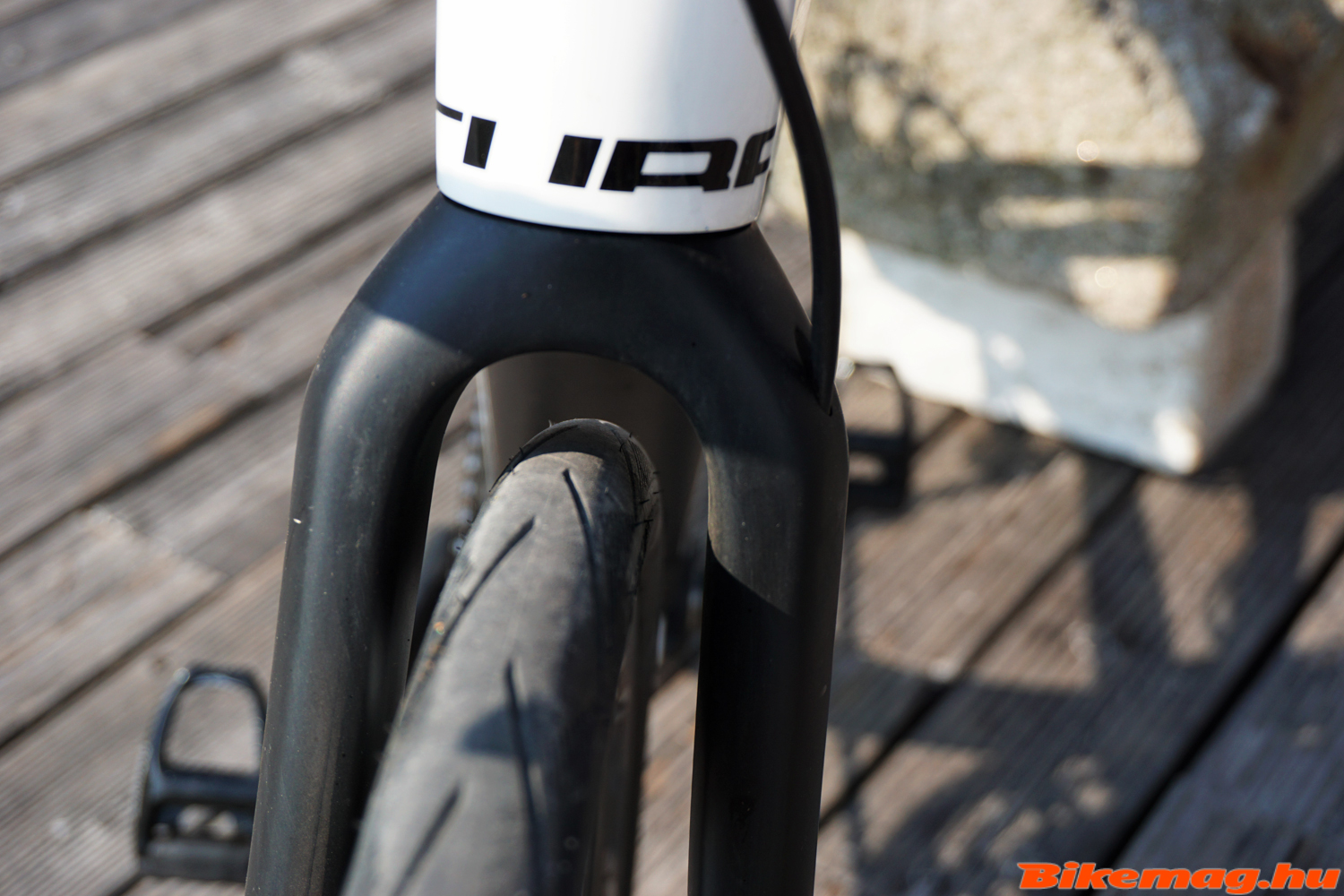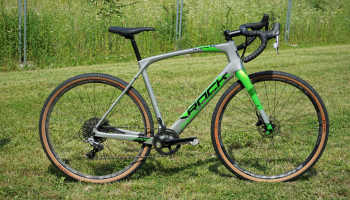Pedelec E-Road is an interesting but divisive bike category, and we’ve finally had an opportunity to test out one of its “specimens”. The Cube Agree Hybrid is an exemplar of this new genre in bicycle technology, since it received all the important innovations featured on today’s e-road offerings. Naturally we were curious to learn what it’s like riding an electric assisted “race bike”.
The E-Road technology is a relatively new, the first examples of this genre appeared only recently on the market. Special equipment had to be employed allowing manufacturers to offer bikes with an acceptable weight, and more or less resembling traditional road bikes in external design. These innovations make the category such a novelty, since previously these characteristics could be achieved with the conventional motor-assisted e-bike technology. E-Road models are still not too common in the manufacturer’s catalogues or on retail shop floors. In addition. They are generally offered by some brands who could afford to allocate considerable resources for such large-scale, ground-up development. Most well-known manufacturers will only launch this type of bicycle next year, but Cube is among the early birds, alluding to the German brands increasing prominence on the market. As we have already reported during our factory visit, the Agree Hybrid is here among the first wave of E-Road bikes.
As mentioned in the introduction, the E-Road category divides opinions in the cycling community. Even present E-bike users and industry is not unanimous about their role and future potential on the market. The primarily caveat is the 25 km/h top speed for motor assistance dictated by the E.U. pedelec regulations. So a question immediately arises: why would anyone purchase an E-bike, which automatically cuts off power assistance at 25 km/h when most road rides the average speed of 30 km/h or even more? This makes no sense to some, and they are quite vocal about this apparent discrepancy. To understand why these bikes came to existence, one has to set aside the notion of performance-oriented riding, and consider other potential users of road bikes. During the Agree Hybrid test, I often faced this very problem while evaluating the merits and disadvantages of this type bike. Should I perceive Cube’s innovative offering from the eyes of a traditional road bike user, or imagine myself to be those who this model was designed for? Well, I did both, so this somewhat lengthy review will attempt to evaluate this ground-braking model from both perspectives.
Let’s start with the technical parameters! The Agree Hybrid’s frame is made of the same C: 62 carbon fiber as the conventional Agree model, its closest relative being the non-pedelec disc brake version of the Cube’s very successful road endurance bike range. Naturally the electrically-assisted Hybrid had to be altered in one or two places, mainly due to the engine and the battery integration and the more diverse target audience. The chain stay length on the frame was increased by 18mm and the down tube also became somewhat larger in diameter. This part of the frame houses both the battery and the engine. Otherwise, the Hybrid inherited all the technical features of Agree, including the aerodynamic saddle clamp and the lower seat tube and seat stays connection.
For pedelec bicycles, the battery placement is a crucial question. In this case of the Fazua drive system almost all design parameters are predetermined, leaving few opportunities for customization by the bike manufacturer. So the frame had to be designed around the Fauza system, and not the other way around. Hiding the battery still requires considerable engineering, which has been done in an exemplary fashion by Cube. In case of the black frame design, the battery cover is completely unnoticeable, but the model I tested had a white finish. Still only experts will likely to notice the battery, since the two-tone down tube could also be part of the design.
Since the battery and the motor are physically joined, they need no cabling. Both are housed inside the down tube, and can be removed one by one. Of course, only battery needs actually be removed for possible replacement or charging. Cube’s e-bike product manager showed how this is done during our factory visit: it’s really a piece of cake!
The system itself is very light by E-bike standards. The motor and all the electronics comes in at 1.92 kg, while the battery weights 1.38 kg, so the whole Fauza system adds a measly 3.3 kg to the bike. Compared to the E-bike drive systems designed for city riding, touring or E-MTB applications, the Fazua’s motor is marginally less powerful, it produces 60Nm, but on the other hand, there is no need to haul a 25kg bicycle and extra equipment up the slopes. The battery also has a somewhat lower capacity. The 250Wh may seem like a deal-breaker to some, but thanks to the low weight of the drive system and the carbon-frame bike, the longer period of off-use during ride, storing and carrying more power becomes less necessary. Fauza has another special feature: namely the motor unit detaches from the drive system when the bike reaches 25 km/h, so the rider does not have to waste power rotating the motor as with most competing drives. The Fauza motor is controlled from the handlebar via a wireless control unit, which is another advanced function lacking is many drive systems on the market. Pressing the “+” button increases the amount of assistance, and implicitly the minus sign does the opposite. In addition, the display also allows the rider to monitor the battery status
The Cube Agree Hybrid SL model is fitted with the Shimano Ultegra component set, which needs no introduction or detailed analysis. We’ve reviewed the group on its own, and it has been featured on countless bikes here at Bikemag.com. So anyone interested can read about it by entering the “Ultegra” keyword in the site’s search engine. Undoubtable Shimano’s second tier road “gruppo” is a fine choice for this bike, offering everything a road cyclist could ask for in terms of performance, paired with reliability and pleasing aesthetics.
By employing the Fazua system, Cube had make a single concession in terms of component uniformity: hence the bike comes with the custom FSA carbon cranks (CK-8685), which could be perceived as a technical upgrade, but it falls out of the line from the Ultegra components concerning its appearance.
The wheel set on the Agree Hybrid SL carries the Newmen brand name, but it’s actually designed in house by the German manufacturer. Our test bike did not have the final production version (Newmen Evolution SL) of the wheels, which will feature thru-axles both front and back. By the time the Hybrid arrives at the shop, the deficiency will be sorted out by Cube. The tires on the wheel set is E-bike specific, the new Schwalbe Durano E measures 32 mm wide on these rims, it is designed to deal with the added torque of the motor assisted drive.
We had a chance to ride the bike in Germany during our factory visit, Cube kindly organizing a guided bike tour program for the journalist, brand distributors and dealers aboard a fleet of Agree Hybrids. Before the ride, we were shown how easy it is to insert and remove the battery unit. In fact it’s so intuitive, that seeing that a bike had no battery installed, one of the Hungarian shopkeepers installed one in at the first attempt before the presentation started!
The ride included a lot of short climbs, both steep and longer smooth stretches, so it became quite evident how Fazua supports rider power input. Moreover our group comprised riders with different stamina and cycling experience. The first side wind clearly demonstrated who needed motor assist, and who was able to maintain a tempo despite the conditions. Oddly, riders not assisted pulled away from those who had to resort to motor assistance. Hence the group quickly fell apart, and we had to wait up for the others at halfway of the ride. Our bikes used very little charge, though during the stronger wind gusts we also resorted to the assisted mode. Switching between self-power and motor-assist needs adaptation even with the Fazua system.
The motor is clearly less powerful compared to other popular E-bike systems on the market, as even using full assistance doesn’t cause a “jump” when accelerating. It behaves just like a road bike, feels very natural, hence the rider is not constantly reminded being on a “motorbike”. This is something I definitely appreciate. Of course, there is a significant increase in speed compared to normal bikes on steep slopes. Nevertheless, as with most e-bikes, it is difficult to keep a constant speed just under the 25 km/h limit. The cutoff tends to disturb the rhythm of pedaling, and when the assistance shuts off, there is an immediate decline in the tempo. The motor reengagement is also somewhat jerky, so it’s best to stay under the 25 km/h, rather than ride on the borderline. On steep climbs this is not too difficult, but on gentler slopes, we might face the scenario above. But it is worth mentioning that the targeted user will less likely to stretch the boundaries of the motor assistance in the mountains.
After analyzing the Fazua motor, let’s take a closer look at the bike itself! I was somewhat worried that the Agree Hybrid may ride like a trekking city bike, with slow cornering and sluggish acceleration. In reality, the first few turns of the pedal in the parking lot dispelled all my doubts. The bike’s handling is very similar to the conventional Agree, it has similar maneuverability and weight distribution, though its longer chain stays lend the bike a gravel-like character. If the motor is turned off, acceleration is a tad more sluggish than with a “full-blooded” road bike, something you might notice during a fast and dynamic group ride, but it’s absolutely not a deal-breaker.
But let’s get back to the test ride! In the second half of the route, the two groups were united, and the rolling hills allowed us to keep a steady tempo. The weaker riders were nicely assisted on the climbs, so they lost very little ground while reaching the top. So they were not fighting for their lives like in the side wind, and clearly enjoyed the unobtrusive support from the Fazua drive. Looking at their faces quickly answers the question of whether or not there is a place for the E-road bike category on the market. They are the target audience, not those who can pedal with an average speed of 30-35 km/h on flat roads. The novice are happy to keep a more moderate tempo, and it’s often the uphill which causes them the most grief. When the gradient rises, the motor is ready to assist them.
A group ride with cyclist of different abilities and motivation is the least favorable way to demonstrate the merits of this new E-bike segment. If only average, non-athletic persons are present, they would certainly have a blast with no pressure from those who the Fazua drive weren’t suited to, for whom the cutoff speed was more a hindrance than an aid. So the reader should imagine a sport enthusiast watching World Tour races on TV deciding to try out road biking in the flesh. It would come a shock to learn that a healthy tempo on a bike involves a lot of effort, especially in the mountains. Hopping on the Cube Agree Hybrid can provide the TV-inspired person with a great experience, enjoying the pleasures of road cycling on any terrain. But the same can be said of cyclists of age, who cannot make the same effort as in their youth, but still loving the fast tempo. Yes, they can feel young again in the saddle of an E-road bike like the Cube Agree Hybrid!
See the manufacturer’s website for more information.
Recommended retail price: HUF 1,699,990
https://www.cube.eu/hu/2019/e-bikes/road/agree/cube-agree-hybrid-c62-sl-disc-whitenblack-2019/
This model on Cube’s international site:
https://www.cube.eu/en/2019/e-bikes/road/agree/cube-agree-hybrid-c62-sl-disc-whitenblack-2019/


